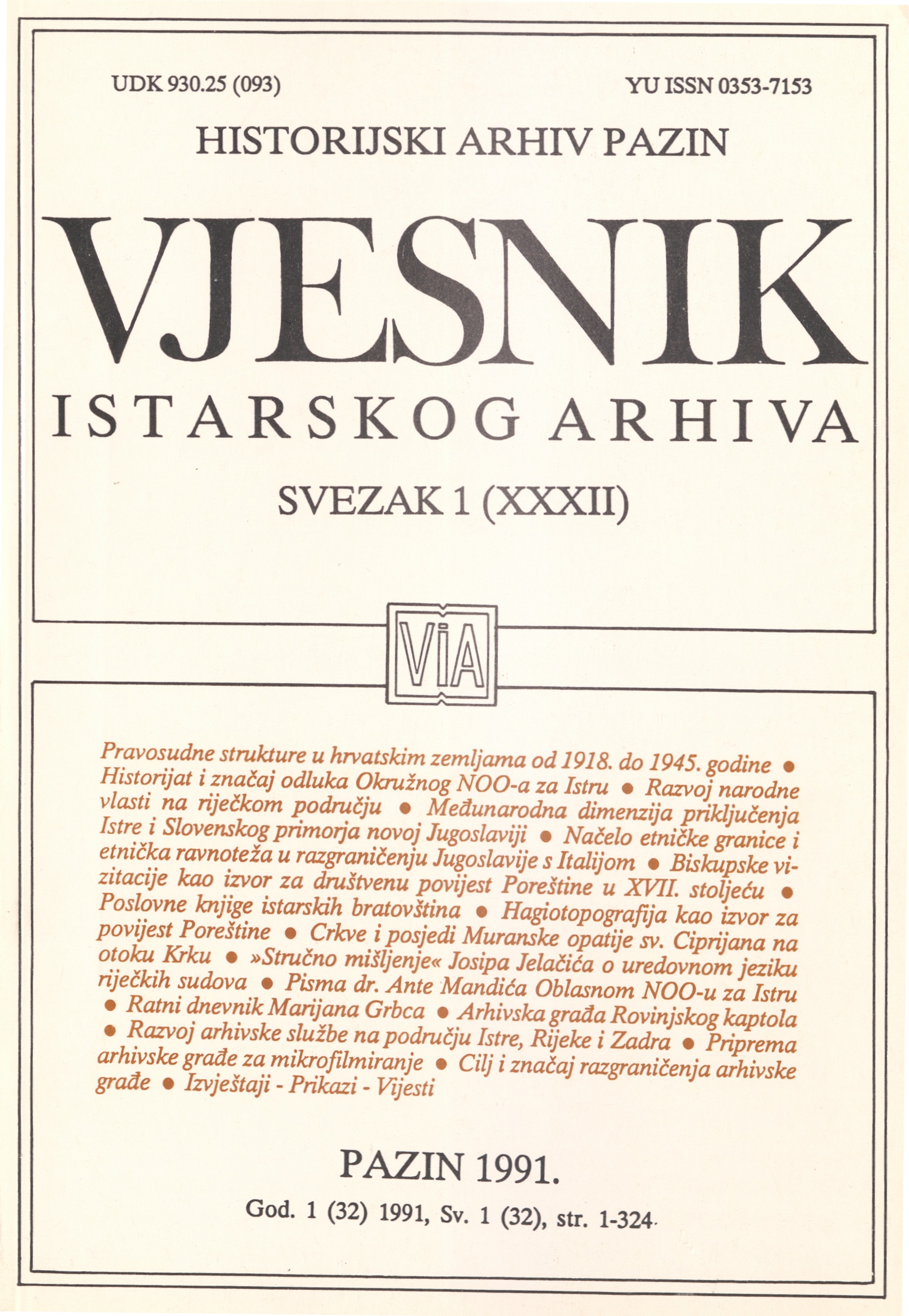The Historical Importance of the Decisions of 13th September 1943 made by the Regional NOO of Istria
Abstract
As a participant in the events leading to the announcement of the Pazin decisions of 13th September, 1943, the author presents his own views on these events in addition to official assessments and interpretations. He also describes the National Liberation Struggle of Istria in its entirety and takes a look at the developments in the aftermath of the SWW. The said Decisions, the author points out, were made at the local level in actual application of the peoples’ right of self-determination. Without waiting for an approval by higher partisan authorities and in response to the will of the people, the Regional NOO (National Liberation Committee) and the Communist Party leadership of Istria decided on their own to unite with Croatia and Yugoslavia. On other occasions, too, reactions by higher authorities failed to come, so the above is not the only example of how Istrians were taking crucial matters in their own hands. It is along these lines of independent decision-making that the first Communist Party leadership of Istria was formed and many other initiatives taken, such as, to mention only few, to elect an Italian representative to the party leadership, to send Istrian representatives to participate with fully equal rights in the 1st session of ZAVNOH (Anti-Fascist Council for National Libaration of Croatia), to set up Istrian partisan units in the adjoining regions where many Istrians were fighting, etc. The idea to form an Istrian battalion met no response until the capitulation of Italy, but the leaders of the National Liberation Movement of Istria, again independently, set about organizing a network of partisan combat units, local national liberation committees, groups of anti-fascist women and young people, as well as printing proclamations and the first issues of Glas Istre (Voice of Istria), etc. All this provides ample evidence that the 15th of September in Pazin was not a »random and spontaneous« event, as often described later on, and is at once the best answer to those who argue that no national liberation movement was under way in Istria in the period preceding the capitulation of Italy. The main reasons for such misconceptions and misinterpretations the author finds in the lack of understanding for the specificities of the then Istrian situation. Thus the categories such as ustashas, chetniks or the white guard were more or less unknown in Istria, whereas populism in the style of the Narodniki movement, non-existent in other parts of Croatia and Yugoslavia, were deeply rooted in Istria. Further, there were two side-by-side communists parties in Istria: the Communist Party of Italy and the Communist Party of Yugoslavia, ideologically often at loggerheads, but also showing sense for tolerance and patient cooperation. Many Italian communists joined the ranks of the Communist Party of Croatia, especially after the Pazin decisions, just as many Croats, the revolutionaries of Istria and Rijeka, had been in the Communist Party of Italy at the time of the fascist dictatorship. It is worth noting that a rather unique phenomenon took place in Istria: the Communist Party of Yugoslavia and Croatia respectively, originated on the revolutionary traditions of another communist party, that of Italy, and the traditions of the local populist movement, organized a massive anti-fascist uprising. As for the post-war developments involving a large-scale exodus of Italians, as well as many Croats and Slovenes, to Italy, the author feels that the blame for it can be put on both Yugoslavia and Italy and that 40 years or so elapsed since then is a distance big enough for an unbiased judgement.
Downloads
Published
Issue
Section
License

This work is licensed under a Creative Commons Attribution-NonCommercial 4.0 International License.

